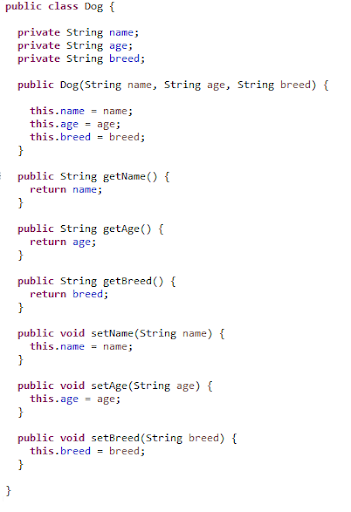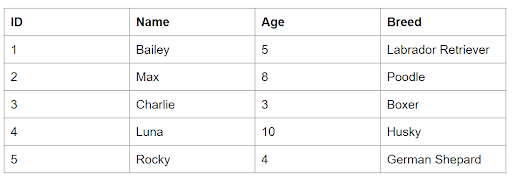Object-relational mapping (ORM) is a design pattern that helps streamline communication between relational databases and object-oriented programming languages like Java or Python.
Why Use an ORM (Object-Relational Map)?
Databases and object-oriented programs use different programming languages and store data differently, which can lead to object-relational impedance mismatch and complicate integration. ORM maps objects to relational database tables by translating an object’s state into a format the database can store, including managing relationships, data types and object identities. This allows the object to be persisted, queried and later reconstructed from the database.
How Does Object-Relational Mapping Work?
Object-relational mapping (ORM) frameworks use configuration or annotations to define how objects correspond to database tables and fields. Objects are converted into structured data the database can store and retrieve. ORM manages change tracking, persistence context and transactional writes, ensuring that updates to objects are committed consistently and accurately.
Because ORM monitors and handles interface changes, developers don’t need to worry about editing code on a constant basis. This technique also enables teams to understand how a database is structured without needing to review the code, making it easier to glean insights from complex states and codes generated by object-oriented programs.
Object-Relational Mapping Example
Consider a Dog class in Java with attributes like name, age and breed. Each instance of this class represents a specific dog.
Here is how the dog class and dog objects look in Java.

When storing these dog instances in a relational database, each row corresponds to an individual dog, and each column maps to a class attribute. When we create a dog record in the table, it’s automatically assigned an ID value.

Object-Relational Mapping vs. SQL
Object-relational mapping and SQL (structured query language) are two very different techniques used for understanding and managing databases.
The main difference between ORM and SQL is the level of abstraction. ORM allows developers to interact with databases using objects and higher-level language constructs, reducing the need to write SQL manually. This abstraction simplifies development but can also obscure what queries are being executed under the hood. In contrast, SQL provides direct, fine-grained control over database operations, offering more transparency but requiring more code and deeper knowledge of database systems.
ORM provides a convenient alternative to SQL, but deciding which one to use often depends on one’s coding experience and the nature of the data-related task that needs to be completed.
Advantages of Object-Relational Mapping
Handles the Logic Required to Interact With Databases
ORM tools automatically generate the necessary SQL queries and handle database transactions so developers don’t need to write SQL code themselves. This process reduces the chance of errors and makes the code easier to maintain because the ORM tool handles the low-level details of database interactions.
Speeds up Development Time for Teams
ORM tools abstract away the low-level details of working with a database, which allows developers to focus on writing business logic instead of SQL queries. This shift results in faster development times because developers can write and test code more quickly.
Decreases the Cost of Development
Because ORM tools automate many of the repetitive tasks involved in working with databases, developers can write more code in less time, thereby leading to a lower cost of development.
Improves Security
ORM tools provide built-in security features that help prevent SQL injection attacks, which are a common security vulnerability in database-driven applications. ORM tools also provide a layer of abstraction between the application code and the database, thereby making it more difficult for attackers to exploit vulnerabilities.
Reduces Boilerplate Code and Simplifies Maintenance
ORM tools allow developers to interact with databases using a higher-level programming language like Java or Python instead of writing SQL queries. This makes the code easier for other team members to read; the code is also easier to maintain because developers don’t need to write as much SQL code. Furthermore, ORM tools provide a standard interface to interact with databases so developers don’t have to learn the intricacies of multiple database systems. Together, all of these elements can reduce the amount of code that developers need to write.
Disadvantages of Object-Relational Mapping
Steep Learning Curve
ORM tools can have a steep learning curve, especially for developers who are not familiar with object-oriented programming concepts. Developers have to understand how to map their object-oriented code to the database schema, which can require a significant amount of time and effort to learn. Additionally, some ORM tools have their own specific syntax and APIs, which developers must learn to use.
Struggles With Complex Queries
ORM tools abstract away the details of working with a database, which can make them less efficient than writing SQL directly. This is especially true when complex queries are involved because ORM tools generate SQL queries automatically. This process can result in less efficient queries than those written by a skilled SQL developer. Furthermore, some ORM tools may not support advanced SQL features, thereby limiting their usefulness for certain applications.
Slow Performance Speed
ORM tools generate SQL queries automatically, which can result in queries that are less efficient than those written by an experienced SQL developer. This lack of efficiency can result in slower performance for database-driven applications. Additionally, ORM tools often generate more database queries than necessary, which can slow down performance even further. While ORM tools can help simplify development, these tools may not be the best choice for applications that need high performance or have strict performance requirements.
Object-Relational Mapping Tools
The list below highlights some of the most popular ORM tools available for Java and Python.
Java
- Hibernate: This tool allows developers to create data persistence classes using object-oriented programming (OOP) concepts such as inheritance, polymorphism and association. Hibernate is known for its high performance and scalability.
- Apache OpenJPA: Another Java persistence tool, Apache OpenJPA can function as a standalone persistence layer for plain old Java objects (POJOs).
- EclipseLink: This open-source Java persistence solution supports relational, XML and database web services.
- jOOQ: jOOQ generates Java code based on the data stored in a database and can also be used to construct type-safe SQL queries.
- Oracle TopLink: With Oracle TopLink, developers can create high-performance applications that store persistent data in either relational or XML formats.
Python
- Django: Django is an efficient tool for building web applications rapidly.
- web2py: This open-source full-stack Python framework is designed to help developers create fast, scalable, secure and data-driven web applications.
- SQLObject: SQLObject is an object-relational manager that enables developers to use an object interface to interact with their database.
- SQLAlchemy: This tool provides persistence patterns specifically designed to optimize database access for high performance and efficiency.
Frequently Asked Questions
What is object-relational mapping?
Object-relational mapping (ORM) is a technique that maps objects onto a relational database, converting the object into data that can be stored, retrieved and reconstructed when needed. Through ORM, changes made to an object are shared with the database, which then updates the data to reflect these changes.
What is the difference between object-relational mapping and SQL?
The difference between object-relational mapping and SQL is that ORM uses a much higher level of abstraction to depict how data is structured. This means ORM involves less intensive coding than SQL, but it also adds a layer of complexity since developers can’t directly interact with code when using ORM.





